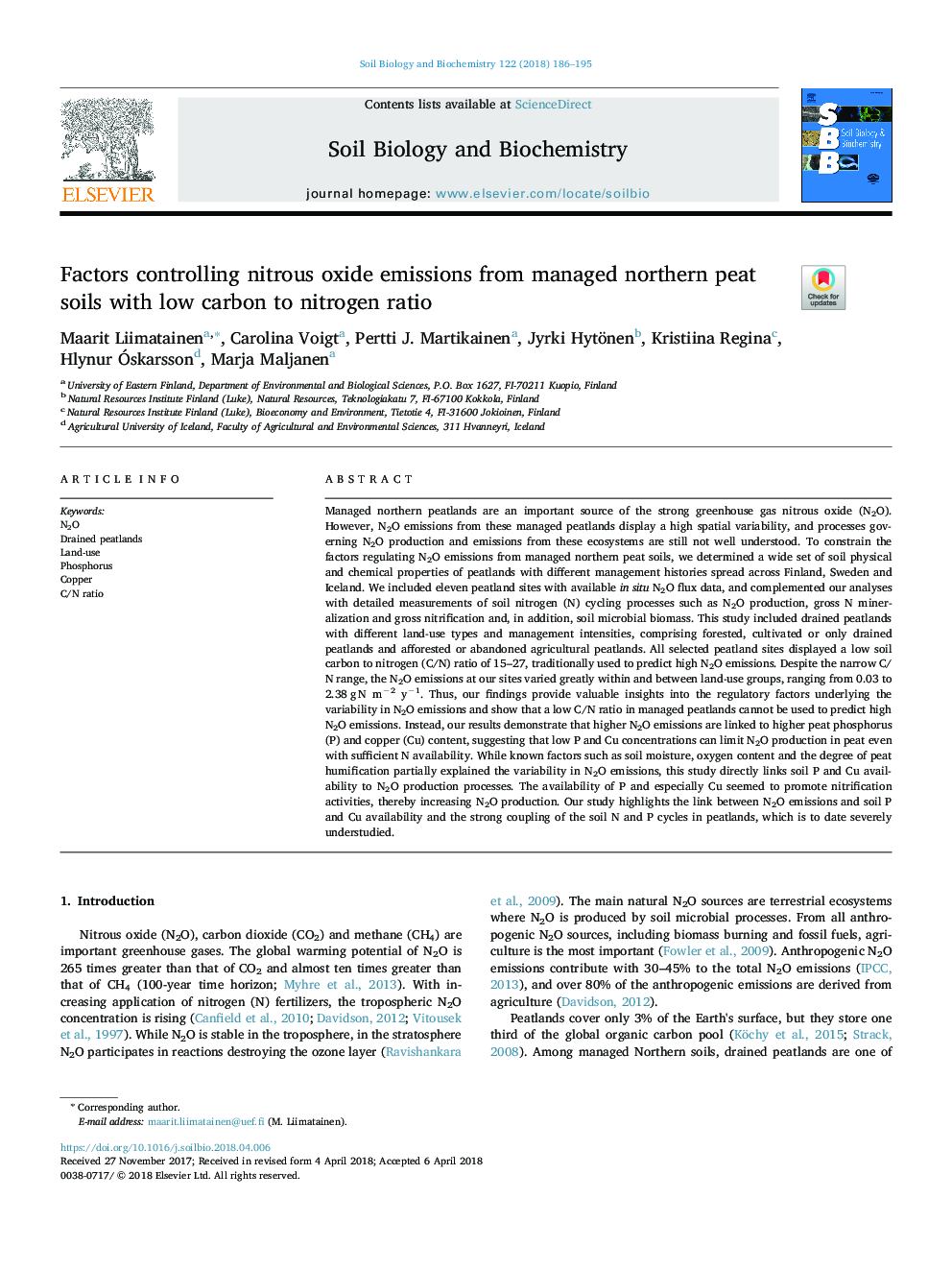| کد مقاله | کد نشریه | سال انتشار | مقاله انگلیسی | نسخه تمام متن |
|---|---|---|---|---|
| 8362722 | 1542562 | 2018 | 10 صفحه PDF | دانلود رایگان |
عنوان انگلیسی مقاله ISI
Factors controlling nitrous oxide emissions from managed northern peat soils with low carbon to nitrogen ratio
ترجمه فارسی عنوان
عوامل کنترل کننده انتشار اکسید نیتروژن از خاک سرخ شده تحت مدیریت سرب در شمال با نسبت کربن کم به نیتروژن
دانلود مقاله + سفارش ترجمه
دانلود مقاله ISI انگلیسی
رایگان برای ایرانیان
موضوعات مرتبط
علوم زیستی و بیوفناوری
علوم کشاورزی و بیولوژیک
دانش خاک شناسی
چکیده انگلیسی
Managed northern peatlands are an important source of the strong greenhouse gas nitrous oxide (N2O). However, N2O emissions from these managed peatlands display a high spatial variability, and processes governing N2O production and emissions from these ecosystems are still not well understood. To constrain the factors regulating N2O emissions from managed northern peat soils, we determined a wide set of soil physical and chemical properties of peatlands with different management histories spread across Finland, Sweden and Iceland. We included eleven peatland sites with available in situ N2O flux data, and complemented our analyses with detailed measurements of soil nitrogen (N) cycling processes such as N2O production, gross N mineralization and gross nitrification and, in addition, soil microbial biomass. This study included drained peatlands with different land-use types and management intensities, comprising forested, cultivated or only drained peatlands and afforested or abandoned agricultural peatlands. All selected peatland sites displayed a low soil carbon to nitrogen (C/N) ratio of 15-27, traditionally used to predict high N2O emissions. Despite the narrow C/N range, the N2O emissions at our sites varied greatly within and between land-use groups, ranging from 0.03 to 2.38â¯gâ¯N mâ2 yâ1. Thus, our findings provide valuable insights into the regulatory factors underlying the variability in N2O emissions and show that a low C/N ratio in managed peatlands cannot be used to predict high N2O emissions. Instead, our results demonstrate that higher N2O emissions are linked to higher peat phosphorus (P) and copper (Cu) content, suggesting that low P and Cu concentrations can limit N2O production in peat even with sufficient N availability. While known factors such as soil moisture, oxygen content and the degree of peat humification partially explained the variability in N2O emissions, this study directly links soil P and Cu availability to N2O production processes. The availability of P and especially Cu seemed to promote nitrification activities, thereby increasing N2O production. Our study highlights the link between N2O emissions and soil P and Cu availability and the strong coupling of the soil N and P cycles in peatlands, which is to date severely understudied.
ناشر
Database: Elsevier - ScienceDirect (ساینس دایرکت)
Journal: Soil Biology and Biochemistry - Volume 122, July 2018, Pages 186-195
Journal: Soil Biology and Biochemistry - Volume 122, July 2018, Pages 186-195
نویسندگان
Maarit Liimatainen, Carolina Voigt, Pertti J. Martikainen, Jyrki Hytönen, Kristiina Regina, Hlynur Ãskarsson, Marja Maljanen,
